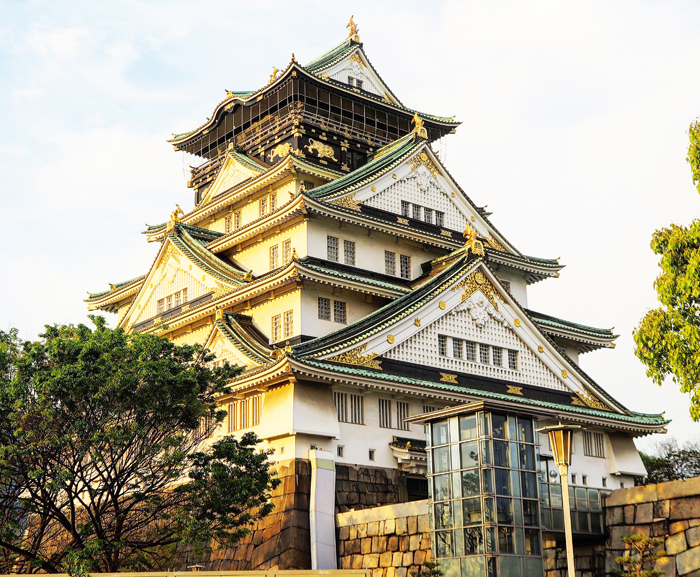By Ardenia Jones Terry
The trip to Tokyo, Japan initially was to be a mere stop on our group’s voyage to Bali for a women’s conference. However, it also turned into an opportunity to visit with Ichuro and his brother Keiji. Thirty years ago, Ichuro, a Japanese exchange student, attended Northwood High School for one year while living with the Schlichers of Northwood, Ohio.
The group of four, Virginia Schlicher, Sharon Vass, Joyce Brown and I, flew 13 hours nonstop from Detroit to Tokyo and then were to fly eight hours nonstop from Tokyo to Bali. As the plans for the trip progressed, the excitement of being in Tokyo grew and the stop in Tokyo expanded from two days to six days.
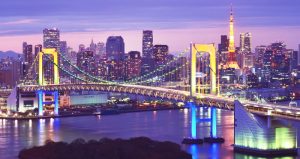
In an effort to see as much of the countryside as possible, the group decided to participate in as many excursions as we could. This meant we were in perpetual motion every day seeing the sites and taking in as much of the Japanese culture that was achievable in six days. Our love for the city and countryside grew with each new experience.
Therefore, you can imagine the hurt and pain we felt when Japan was later hit with an earthquake, the tsunami, and then the nuclear event which caused untold destruction and human devastation to one of the cleanest cities, best-manicured country sides, well maintained rice paddy fields, with the friendliest people we have ever encountered on our travels.
Upon our arrival in Tokyo, we checked-in to the New Otani Hotel which serves as the hotel for the descendants of the Shoguns, ancient military commanders. The hotel’s 400 year-old 10-acre garden is one of the most renowned gardens in Tokyo and once belonged to the Shogun. People come from all over the world to see the beautiful garden and to enjoy the peace and tranquility.
Jazz has a long tradition in Japan. One evening, we were fortunate to hear a jazz trio in one of the restaurants in the New Otani Hotel. The trio played both smooth jazz and traditional jazz. We munched on Japanese appetizers and sipped beverages as we listened to jazz in Japan sung by a woman from San Francisco.
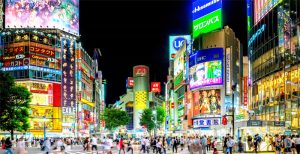
Another evening, Ichuro and Keiji took the group to the Akasaka Ninja Restaurant a few blocks from the hotel. The entrance to the restaurant was extraordinary with trap doors and draw bridges as the entrance to the restaurant. When the Ninja characters appeared at our table, they were entertaining with exploding menus, cards and the Magic Ninja performed fantastic tricks.
My favorite dish was the stir-fried chicken with cashews and red-hot peppers sautéed in flavored oil. It is truly something everyone should try. We arrived in Tokyo, Hakone, and Nikko, 10 months before the earth quake and tsunami. It is our hope that many of the “Must Sees” described within this article remain intact for you to view and enjoy.
The “Must Sees” that made our trip are as follows:
Mount Fuji Mount (Mt.) Fuji, which is 12,389 feet in elevation, is much more than just a mountain in Japan. It dominates Japanese culture and the landscape for Mount Fuji is visible from all over Tokyo. It is an active volcano. As we ascended to the top of Mt. Fuji, we stopped at the Fuji Visitor Center and purchased t-shirts, posters, etc. The second stop on our climb to the top was at the Mt. Fuji Fifth Station; there are eight Mt. Fuji stations. At the Fifth Station, we enjoyed the view from 2,300 meters above sea level, took pictures, and shopped. There were several buildings for shopping at the Fifth Station. Unfortunately, due to the dense cloud cover, we could not see the peak at the Mt. Fuji Fifth Station as expected. The peak, however, was visible from a distance as we descended the mountain.
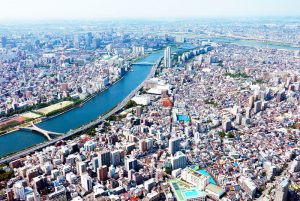
Tokyo Tower In the Tokyo Tower on the Observation Level, we met Japanese students who were on vacation and had come to Tokyo to enjoy the sites. The height of the Tokyo Tower is 333 meters. It is a striking orange color and resembles the Eiffel Tower in Paris. The Tokyo Tower has been the world’s tallest self-supporting steel tower since 1958. The Eiffel Tower in Paris is 320 meters high.
Meiji Jingu Shrine The Meiji Jingu Shrine is a popular Japanese Shinto shrine in the heart of Tokyo. A “torii” or traditional Japanese gate dividing the physical and spiritual worlds greets you at the entrance to the shrine. The Meiji Jingu Shrine is a great contrast to the hustle and bustle of Tokyo with a forest of 120,000 evergreen trees surrounding the Shrine making it appear as if it is located in the countryside. The Meiji Jingu Shrine is dedicated to Emperor Meiji and his wife, Empress Shoken.
Akasaka Palace The Akasaka Palace is a former imperial residence that functions as the “State Guesthouse”. The palace is a National Treasure of Japan designated by the government as the official accommodation for visiting dignitaries. Secretary of State Hillary Clinton has been a guest at the palace.
National Diet Building The National Diet Building like the United States Capital in Washington DC is the place in which both the houses of the Diet of Japan (House of Representatives and the House of Councilors) are held.
Tokyo River Cruise We cruised the Sumida River, which is said to be the original passage for trade and commerce in Japan. Several of the sites we saw on the cruise included the famous Tsukiji Fish Market, one of the largest fish markets in the world, the Tokyo Grand Sumo Tournament Arena, and the Asahi Beer Headquarters, recognizable by the golden flame on its roof!
Kappabashi Street Kappabashi Street is a shopping street lined with dozens of stores selling restaurant supplies. The street is famous for stores which sell plastic and wax food samples used by many Japanese restaurants in their show windows to show customers how their dishes will be served.
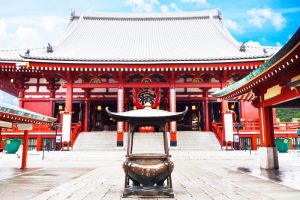
Lake Ashi-Hakone Lake Ashiis a scenic crater lake known for its views of Mt. Fuji and its numerous hot springs. We took a cruise on Lake Ashi aboard a large sightseeing boat traversing the lake providing us with scenic views only available from the boat.
Mount Komagatake Aerial Cableway Several members of the group rode an aerial cable car up and down Mount Komagatake for a sweeping view of Hakone National Park and the surrounding area. Kodama Shinkansen-Bullet Train From Hakone, we returned to Tokyo by the Kodama Shinkansen or bullet train. It took us four hours to get to Mt. Fuji and 30 minutes to return to Tokyo aboard the train.
Nikko Toshogu Shrine Nikko is a city about two and a half hours north of Tokyo by bus. Nikko is very famous for being the center of Shinto and Buddhist worship for many centuries. In Japan, many people embrace both religions. Upon arrival, we visited the World Heritage site, the Toshogu Shrine, the Mausoleum of the first Tokugawa Shogun, the Five Story Pagoda, and the Tomb of Lemitsu (grandson). We also viewed the famous three monkeys (hear no evil, speak no evil, and see no evil) relief carving in the Toshogu Shrine. In addition, the group viewed the Futarasan Shrine/ Bridge and the Sanbutsudo Shrine where three large statues of Buddha are housed. Lake Chuzenji is a scenic lake in the mountains above the town of Nikko where we stopped for pictures of the breathtaking views. It is located at the foot of Mount Nantai, Nikko’s sacred volcano.
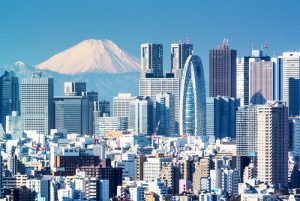
Kegonnotaki Falls The approximately 100-meter tall Kegonnotaki (Kegon) Waterfall is the most famous of Japan’s three beautiful waterfalls. The Kegon Waterfall is the only exit for the waters of Lake Chuzenji. It can be seen from an observation platform. The site of the Kegon Waterfall also houses a pottery shop. Several members of the group purchased pottery by the famous Japanese artist, Miyake, Yoji. The pottery studio is a must stop after you have seen the waterfall.
In the Narita Airport on our way to Bali, Indonesia, we caught a glimpse of the MacDonald Arches and decided to eat breakfast there; it was a little taste of home. From all accounts, this was a trip of a lifetime. You would not regret a trip to Japan. So, Go See Japan! Don’t put it off.
Ardenia Jones Terry, Ph.D., is retired from The University of Toledo and is president of Jones Terry & Associates, LLC and a travel agent registered with the American Travel Bureau

